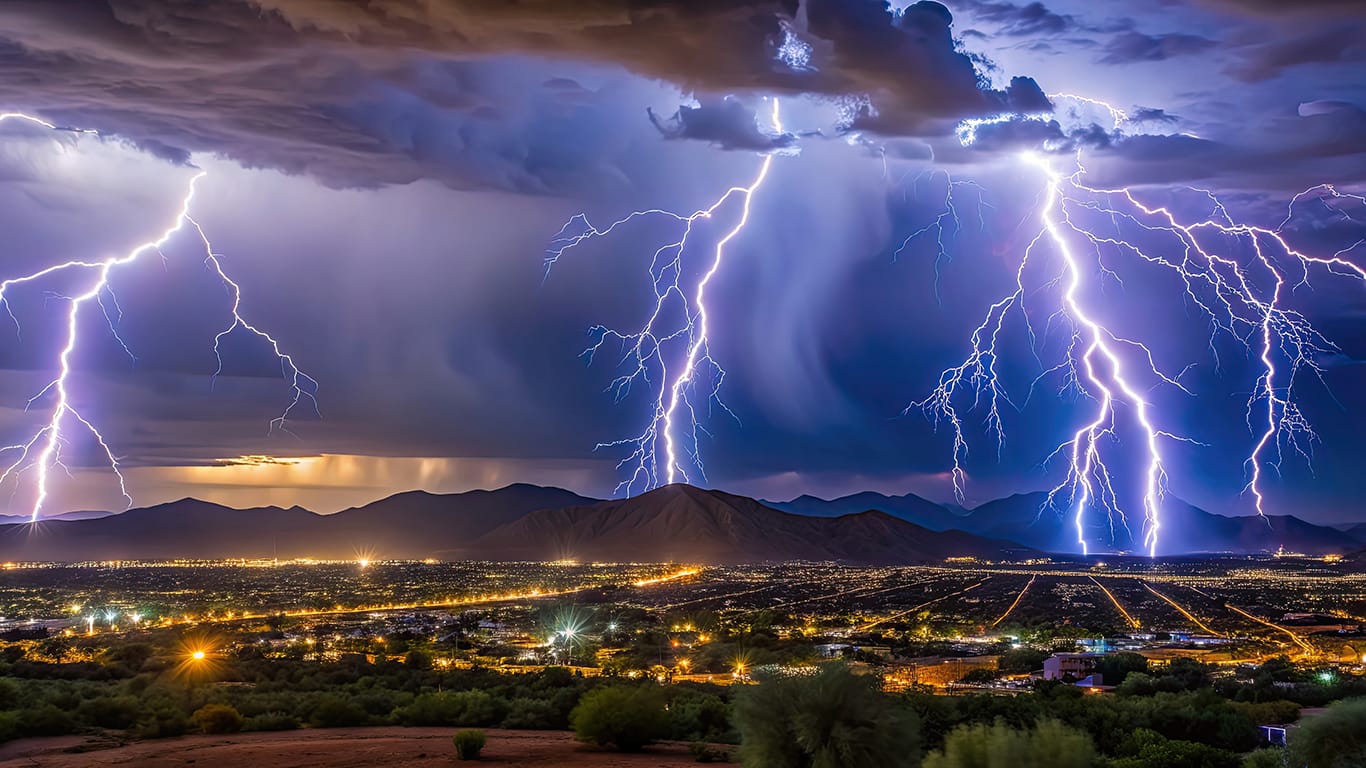When rare bursts of rain sweep across the Valley, Arizonans can’t help but revel in the sound of thunder, the smell of wet creosote and the temporary relief from the heat. But while soaking Arizona storms might feel like a gift to a drought-weary desert, the reality of Arizona’s water picture is far more complex.
DEEPER DIVE: Arizona named best state in the U.S. to see the supermoon in November
LOCAL NEWS: 100 best places to work and live in Arizona for 2025
No one understands that complexity better than Sarah Porter, director of the Kyl Center for Water Policy at Arizona State University’s Morrison Institute for Public Policy.
For nearly a decade, Porter has been one of the state’s leading voices on sustainable water management. She helps policymakers, communities and residents navigate the tough questions about where our water comes from and how we use it.
This fall, after a series of unusually wet weeks brought nearly 7 1/2 inches of rain to the Phoenix area (the fourth wettest October on record), many residents have wondered whether the downpour might finally make a dent in Arizona’s long-term drought.
Porter says it’s a welcome change of pace, but not a meaningful one in terms of water supply. The real story, she explains, lies in how the state captures, stores and manages its resources — particularly the snowpack-fed systems and groundwater aquifers that sustain Arizona’s cities and farms.
For Porter, the takeaway is clear: Arizona’s water future depends not on hoping for rain, but on how wisely we prepare for the times when it doesn’t come.
In the following Q&A, Porter discusses what recent storms mean for the state’s water outlook, the potential of new recharge strategies and the everyday choices that can help Arizonans live sustainably in a desert that is both fragile and full of possibility.

Question: How helpful was the 7 1/2 inches of rain we’ve had this past month in terms of drought relief and water supply?
Answer: Everyone in Arizona loves a rainstorm — it’s great for the soul and for holding the dust down. But rain in the Phoenix or Tucson area has very little to do with our overall water supply.
Phoenix’s water comes mainly from three sources: the Colorado River, where most of the water originates in the upper Rockies; the Salt River Project (SRP) system, which covers about 8 million acres of forest in northern and eastern Arizona and depends on winter snowpack; and, finally, groundwater. The Tucson area relies on water pumped from aquifers, which is replenished by imported Colorado River water.
In most of Arizona, only about 2–3% of precipitation becomes groundwater — most of it evaporates or is used by plants. So, while a big rainstorm in Phoenix might provide a tiny boost to groundwater recharge, it doesn’t significantly affect our other water supplies.
Rain in Phoenix or the Sun Corridor down to Tucson doesn’t make a big difference to our water system.
Q: I’ve heard that rainfall helps replenish the areas around Phoenix where water is “banked” or stored. Is that true?
A: In Arizona, we do a lot of water banking, which means directing water into aquifers to recharge them. But most of that water isn’t storm runoff from local rainstorms — it’s excess Colorado River water or treated effluent.
There are some places with retention basins designed to capture stormwater and let it percolate into the aquifer, which is helpful. In fact, that’s a strategy with some potential, especially in rural parts of the state. There’s an ongoing tri-university project, funded by the Arizona Board of Regents, exploring opportunities for more stormwater recharge across Arizona.
That said, stormwater recharge isn’t currently a major contributor to our overall water supply. It’s valuable in certain locations, but it’s not a large-scale solution to the state’s water challenges.
Q: Could that change if we built better infrastructure to capture and store rainwater?
A: When you ask why aren’t we building certain water infrastructure or we haven’t already done it, the answer usually comes down to cost.
Rainwater harvesting and storage infrastructure would be expensive compared to other ways we can secure water. For instance, if we get only 7 or 8 inches of rain a year, a 2,000-square-foot roof might collect enough water to supply a household for just a couple of months. And because most of that rain comes during a few big storms, you’d need a comparatively large tank to store it.
For individuals passionate about rainwater harvesting, I always say go for it. But as a community-wide investment, it doesn’t offer the best return compared to other strategies. Right now, there are more cost-effective ways to improve our water resilience.
Q: Aside from air quality and the “dusting off” effect, are there other benefits to a big rainfall in the Valley?
A: The dust control benefit is actually significant. Particulate matter is one of our major air quality problems, and rain reduces airborne particulates, essentially washing them out of the air. And it helps stabilize the soil: construction sites use water to suppress dust, and rainstorms do the same thing across the Valley. But in terms of water supply, local rainstorms here don’t make much difference.
About 50–70% of residential water use goes to outdoor watering, and very few people adjust their irrigation after it rains. Walk through any neighborhood after a downpour and you’ll still see sprinklers running. If more of our irrigation systems had sensors that paused watering after rainfall, that could help conserve water, but those systems aren’t widely used yet.
Q: What else should we be thinking about when it comes to big rainstorms and water use?
A: There are definitely ways we could design our landscapes to take better advantage of rain. We can take advantage of rain by designing yards and public spaces to capture rain where it falls and direct it to plants. This type of landscape architecture is referred to as “low-impact development.”
If you use desert-adapted plants, you can even reach a point where you don’t need supplemental watering.
Beyond landscaping, we should look at how we design hard surfaces like streets and parking lots. After a storm, water often pools and then evaporates off these surfaces. If we could redirect some of that water to vegetation or recharge basins, we could make small but locally meaningful gains.
At the same time, we have to remember — we live in a desert. High evaporation is part of our reality. Using rainfall effectively means finding ways to work within that constraint.
Q: Before we wrap up, did this recent storm have any noticeable effect on reservoir levels?
A: I checked the local reservoirs before our call, hoping maybe this storm dumped enough water in the mountains to make a real difference. It looks like it raised levels in the SRP system by about one or two percent — so helpful, but not enough to celebrate.




